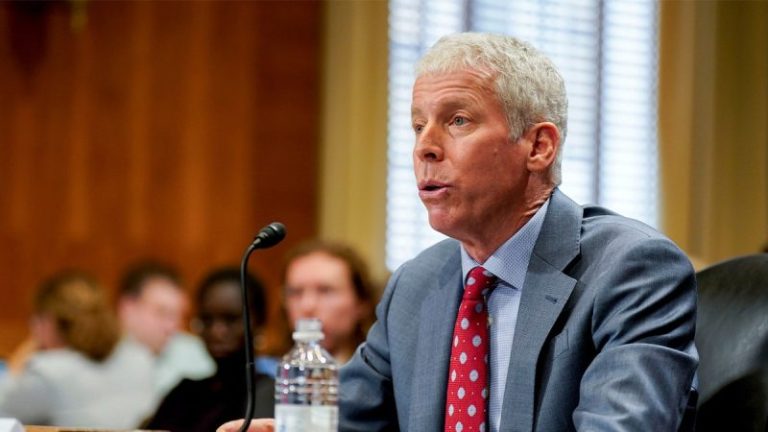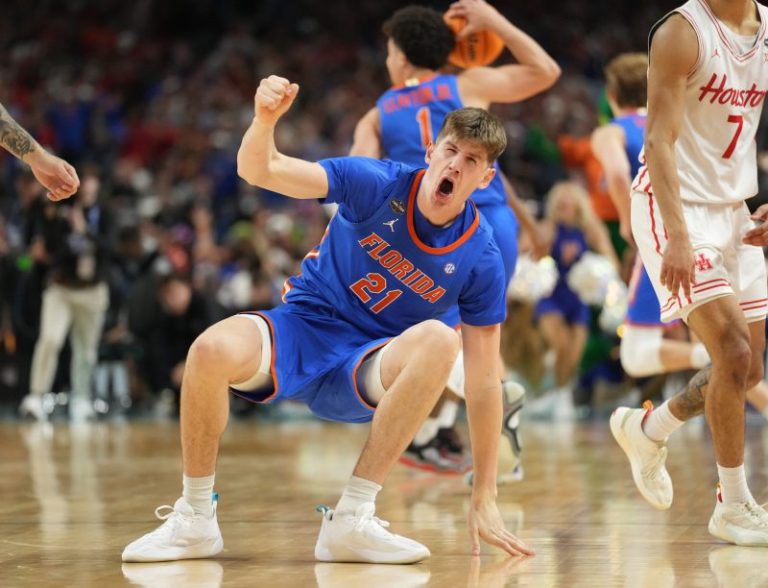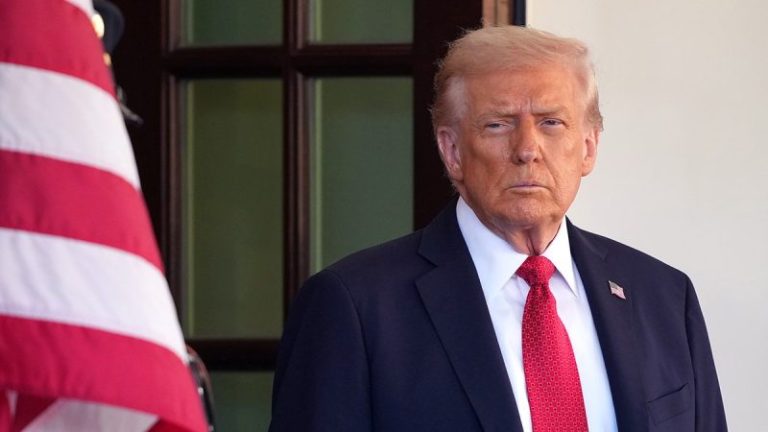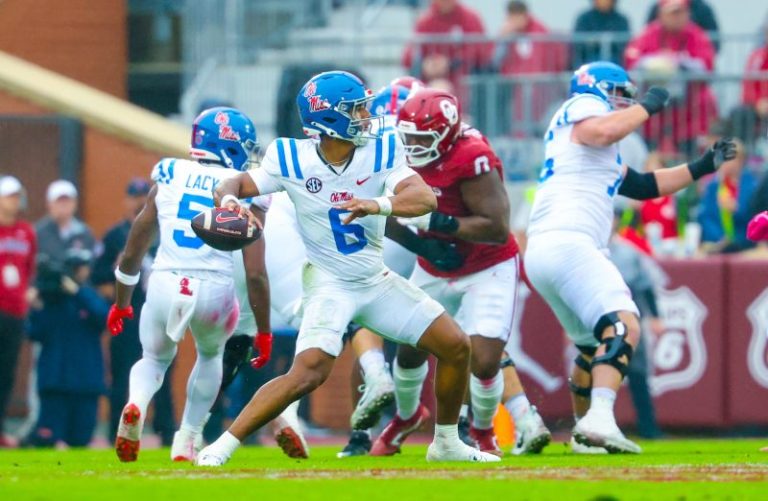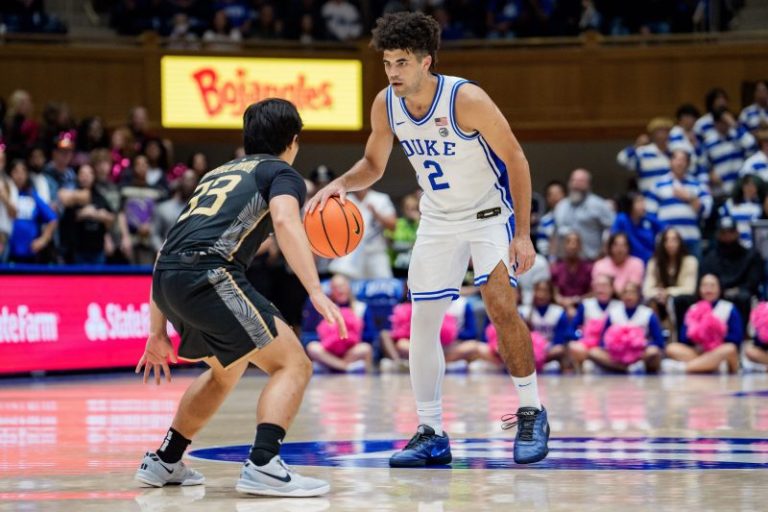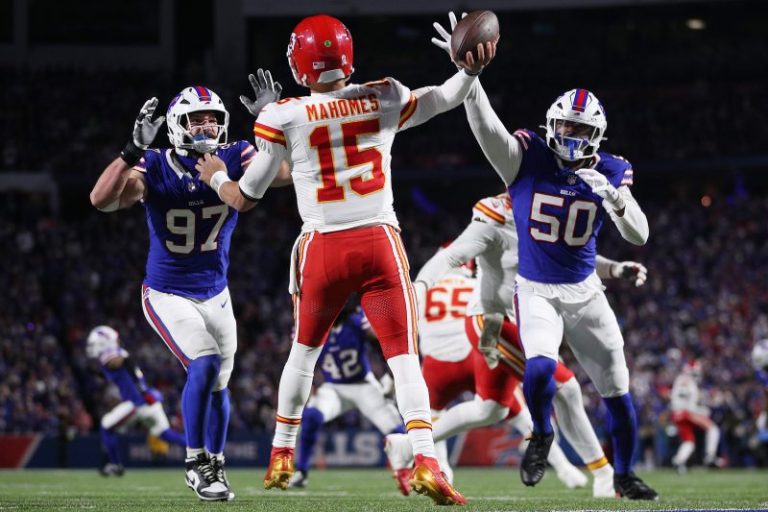NFL Week 9 provided some topsy-turvy results, with several challenges to the emerging pecking order.
The Colts previously looked unstoppable, but Daniel Jones and the high-powered offense came apart against the Steelers.
The surging Chiefs met their match against a Bills team still seeking a postseason breakthrough.
The 32 things we learned from Week 9 of the 2025 NFL season:
1. No lead is safe, no team is as good as you might think and maybe none are as bad, either.
2. The Indianapolis Colts, at 7-1, entered the weekend with the league’s best record … and got handled 27-20 in Pittsburgh by a Steelers squad coming off consecutive losses.
3. Admittedly, I was wrong about Indy – I thought the Colts would be picking near the top of the draft in 2026, not competing in the playoffs … in all likelihood. But they had gotten awfully fat on a schedule packed with low-nutrition opponents like the Dolphins, Raiders and Titans (twice).
4. Facing a Pittsburgh defense that was among the league’s most woeful – and the NFL’s worst against the pass – going into Sunday, Indianapolis QB Daniel Jones (5 turnovers) played not like a potential Most Valuable Player candidate but like the New York Giants version of himself facing the Steel Curtain. That performance helped render fellow MVP aspirant Jonathan Taylor into a mere mortal – 57 yards from scrimmage and nary a TD.
5. The number of consecutive times the Buffalo Bills have beaten the Kansas City Chiefs … in the regular season. Buffalo prevailed 28-21 at Highmark Stadium on Sunday.
6. In so doing, the Bills held K.C. QB Patrick Mahomes to the first game of his illustrious nine-year career when he did not complete at least 50% of his passes, the three-time Super Bowl MVP connecting on just 15 of his 34 throws.
7. Mahomes’ chances for a third league MVP also took a hit Sunday … but you can bet he hasn’t forgotten that he’s also 4-0 against Buffalo in the playoffs.
8. Six hundred miles to the north and west of Pittsburgh, another projected No. 1 seed, the Green Bay Packers, laid an egg at home to a Carolina Panthers squad fielding a battered offensive line. No matter, it turns out, as RB Rico Dowdle made the Pack D the latest one he’s victimized in a banner season that’s seen him displace Chuba Hubbard as Carolina’s bellcow.
9. If an inability to handle Dowdle wasn’t bad enough, the Pack also didn’t move the ball very well six days after torching the very same Steelers who rocked the Colts. (This league, man … who frickin’ knows?)
10. And who frickin’ knew Dowdle couldn’t thrust a pair of celebratory pumps following his second visit to the end zone Sunday?
11. Maybe the Packers need to get out of the throwback uniform business, because they didn’t look all that great literally, either, in their navy/brown/coppery “1923 Classic” uniforms.
12. However we appreciate the commitment of the Guardian Cap folks, who engineered something for Green Bay WR Romeo Doubs. He wore the padded cover, as he customarily does during games … though it didn’t quite resemble a leather helmet worn more than a century ago.
13. Green Bay went from the NFC’s No. 1 projected playoff seed at the start of Sunday to No. 4 by day’s end – and fortunate to still be atop the quickly condensing NFC North.
14. The idle Philadelphia Eagles and Tampa Bay Buccaneers moved to the top of the NFC standings, along with the Seattle Seahawks and Los Angeles Rams, though the reigning champs are technically now first thanks to their 5-1 conference record.
15. Meanwhile, the Colts retain the top spot in the AFC – for now – by virtue of their 6-1 record in conference games. That aside, they are in a three-way tie with the New England Patriots and Denver Broncos, who both improved to 7-2 on Sunday.
15a. The reigning conference champion Chiefs, still dynastic as far as we know, would make the playoffs if the season ended today. It doesn’t.
16. With Jones and Taylor flopping in Steel City, Mahomes’ Chiefs falling in Western New York and the Bucs’ Baker Mayfield on bye, have any new MVP candidates entered what’s become the opposite of a short list?
17.Maybe Patriots QB Drake Maye? He orchestrated yet another win Sunday with a typically efficient performance even if it was the second-year star’s most scintillating afternoon in a one-point escape from the Atlanta Falcons.
18. Maybe Buffalo’s Josh Allen hangs on to the hardware for another year after generating another three TDs (2 rushing, 1 passing) against the Chiefs.
19.But for my money, it’s QB Matthew Stafford, who’s thrown nine TD passes (against 0 INTs) in his last two outings for the scalding Rams, who have won their last three games by a combined score of 86-20.
20. The number of NFL seasons played by recently signed Broncos TE Marcedes Lewis, who made his season debut Sunday.
21. Speaking of surprises, who had the Minnesota Vikings, QB1 J.J. McCarthy freshly reinserted into the lineup and accounting for three TDs, beating the Lions in Detroit for the first time since the 2020 season
22. However newly extended Lions DE Aidan Hutchinson did (barely) manage to sack McCarthy, his former University of Michigan teammate, in their first meeting as pros.
23. Another former Wolverine, Chicago Bears TE Colston Loveland, had to yet to score in his rookie season but posted his first two professional touchdowns in Cincinnati on Sunday – including the game-winning 58-yard run-and-catch with 17 seconds to go.
24. Dowdle 2.0? How about Chicago rookie RB Kyle Monangai? Starting in place of injured starter D’Andre Swift, Monangai exploded for 198 yards from scrimmage in Sunday’s victory.
25. Overall, the ascending Bears and rookie HC Ben Johnson enjoyed their most prolific offensive output of the season with 47 points and 576 yards. QB Caleb Williams passed for three scores and caught his first career TD from WR DJ Moore on a trick play.
26. Cincinnati QB Joe Flacco did torch Chicago’s defense for 470 yards and four touchdowns through the air – remarkably, the first time in Flacco’s 18-year career that he’d thrown for more than 400 yards.
27. No quarterback – not Tom Brady, not Aaron Rodgers, not Warren Moon – has thrown for more yards in a regular-season game after his 40th birthday than Flacco did Sunday.
28. But the disastrous loss to the Bears should at least clarify one important matter to the Bengals: It’s time to get all that they can for Pro Bowl DE Trey Hendrickson and move him prior to Tuesday’s 4 p.m. ET trade deadline.
29. Sunday’s decisive loss to the Rams might clarify two important considerations for the New Orleans Saints as well.
29a. Now 1-8, New Orleans GM Mickey Loomis should break with his track record and consider a fire sale going into Tuesday, perhaps even dangling WR Chris Olave to potential trade partners.
29b. Currently perched atop the 2026 draft order, the Saints will almost certainly be taking a quarterback in the first round next year for the first time in 55 years – Archie Manning in 1971 the last one they took in Round 1.30. The San Francisco 49ers remain in the thick of the hunt – largely thanks to the Herculean effort of RB Christian McCaffrey, who had 173 yards from scrimmage and two TDs in Sunday’s defeat of the New York Giants.
31. CMC has a realistic shot to become the first player with multiple seasons of 1,000 yards both rushing and receiving.
32. The kicking portion of the NFL record book continues to be rewritten, Jacksonville Jaguars K Cam Little hitting a record 68-yarder in his team’s 30-29 overtime win at Las Vegas. Your move, Brandon Aubrey.
This post appeared first on USA TODAY


